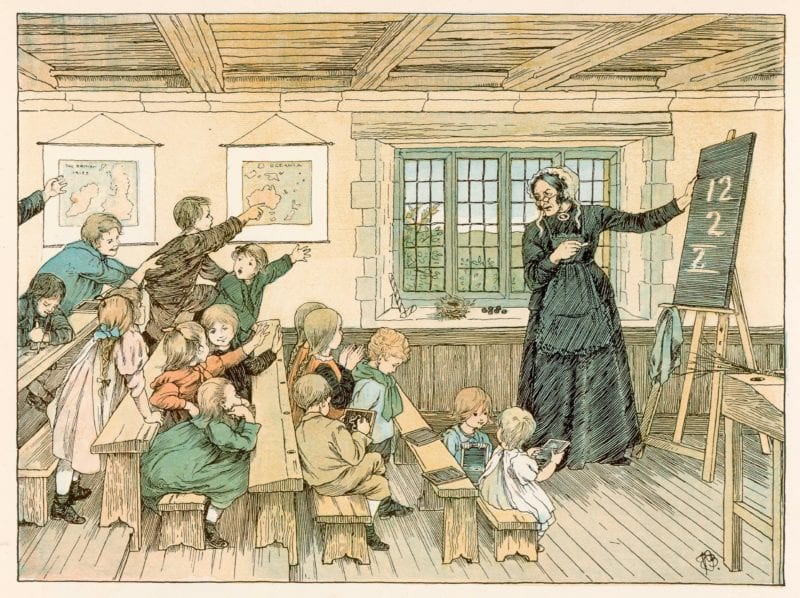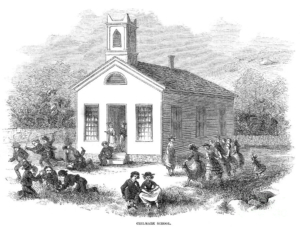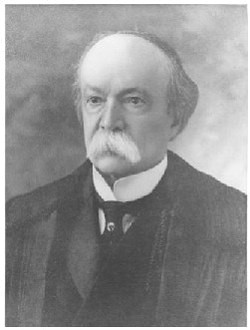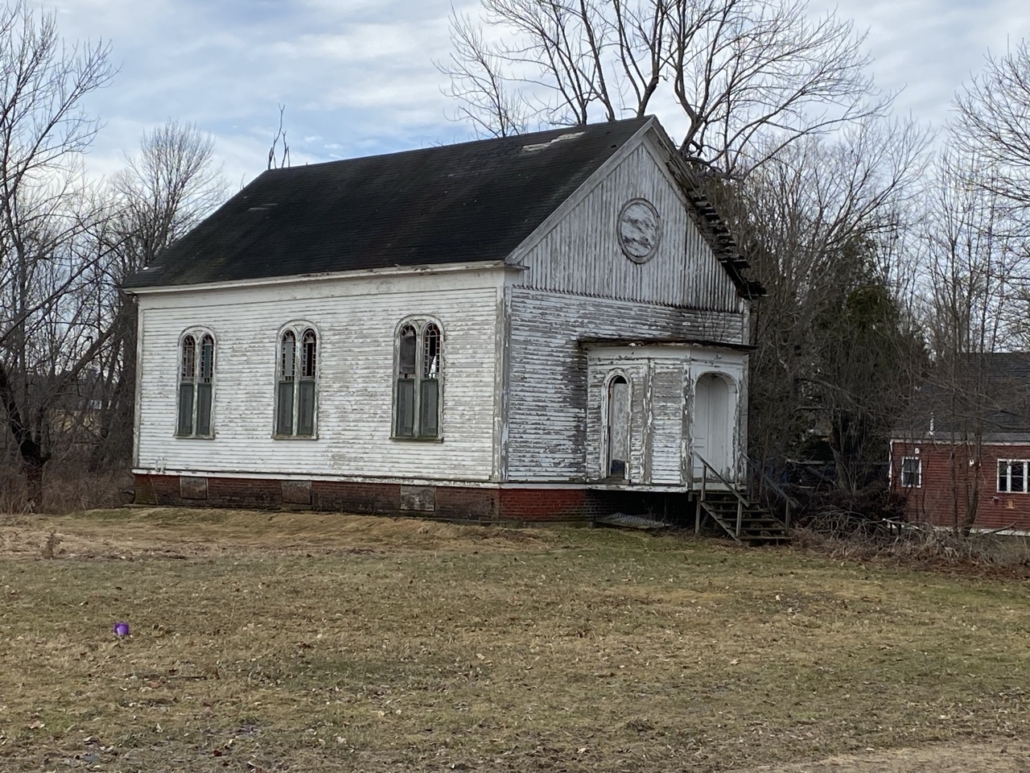Around the Kennebec Valley: Education in 18th & 19th centuries
 by Mary Grow
by Mary Grow
Part 2
Maine Law
Massachusetts residents who moved to Maine brought with them the Massachusetts enthusiasm for education, as noted last week. Alma Pierce Robbins, in her 1971 Vassalboro history, quoted from a report coming, ironically, from an October 1785 Portland convention called to discuss separating Maine from Massachusetts.
The excerpt on education that Robbins chose said: “A general diffusion of the advantages of Education being essential to the preservation of the rights and liberties of the people; to promote this important objective the Legislatures are authorized, and it shall be their duty to require, the several Towns to make suitable provisions, at their own expense, for the support and maintenance of public schools.”
The report further called on legislatures (why the term is plural is not explained) to “encourage and suitably endow” more advanced educational institutions, “academies, colleges and seminaries of learning.”
Or, as Ernest Marriner developed the theme in his 1954 Kennebec Yesterdays, people living in scattered log cabins might not be immediately concerned about a schoolhouse; but the “inherent concern for education which has so long characterized New England people” led them to provide teachers – “[i]tinerant schoolmasters and itinerant preachers, sometimes in the same person” – for their children “even before they incorporated their towns.”
The 1820 Constitution of the new State of Maine recognized the importance of education in Article 8, and provided a minor state role, according to a summary by Richard R. Wescott and Edward O. Schriver in Judd, Churchill and Eastman’s Maine history.
Article 8 is titled Literature. It begins: “A general diffusion of the advantages of education being essential to the preservation of the rights and liberties of the people; to promote this important object, the Legislature are authorised, and it shall be their duty to require, the several towns to make suitable provision, at their own expense, for the support and maintenance of public schools.”
The state had a further duty to support higher education, by encouraging and “occasionally” endowing “academies, colleges, and seminaries of learning.” The legislature could regulate any college it supported financially.
Marriner said the first Maine legislature after separation from Massachusetts, in 1820, passed a law requiring every town, “regardless of size,” to raise 40 cents per resident and distribute the money among the school districts in town. (Massachusetts law, summarized last week, applied only to towns with at least 50 households.)
(Alice Hammond, in her history of Sidney, and Wilmot Brookings Mitchell, in his chapter on education in Louis Hatch’s Maine history, date this law to 1821 – perhaps they were thinking of the year it took effect?)
Forty cents per resident did not raise a lot of money, Marriner commented. In 1825, he wrote (quoting Henry Kingsbury’s Kennebec County history), the state-wide average was $47.75 for each school district. “No wonder a whole year sometimes meant only eight or ten weeks,” he added.
Hammond said the required minimum amount increased to 75 cents in 1833 and to $1 in 1868, but was reduced to 80 cents in 1872 and so remained for almost a century.
The 1821 law also provided for teacher certification, Mitchell said, with “special stress upon sound moral character.” As in Massachusetts, he wrote, the spelling book and the Bible went together; Maine legislators demanded, in addition to “reading, writing and arithmetic,” “piety and justice, sobriety and regard for truth.”
Mitchell said from the 1820s on, the town and each school district in it shared educational responsibility. Hammond implied that until the 1870s, the district was the main actor.
In Mitchell’s summary, districts, overseen by each district’s agent (or, Marriner said, sometimes a group of agents, a mini-committee, for larger districts), had multiple duties: siting, building and maintaining school buildings, providing supplies, choosing teachers, determining the length of school terms and the age at which the district students could start school.
Marriner leaned toward Hammond’s view that the district was the boss. “In the earlier days [of the 19th century] the districts were completely independent in operation and management,” he wrote.
Marriner said each district’s supervisor remained “responsible to no one except the residents of his district.” His list of district duties and responsibilities added one more to Mitchell’s: deciding “what text books should be used.”
After the 1820 state law, each district no longer had to raise district taxes. Instead, each got its share of the money town voters raised annually (not all towns’ voters consistently felt they could afford to obey the 40-cents-per-resident law).
Each district’s share was based on its population of four- to 21-year-olds. In 1829, Robbins said, state legislators added a requirement to send the state “a census of all persons between the ages of four and twenty-one years.”
Voters also elected a town school committee, not more than three nor more than seven men, Mitchell wrote.
This committee’s duties, he said, were to “examine and certificate the teachers, visit and inspect the schools, inquire into the discipline and proficiency of the pupils, choose the text-books, dismiss incapable teachers when they saw fit, and use their influence and best endeavor to secure good attendance.”
Marriner seemed to consider the town committee an exception. “The complete independence of the school districts, while common along the river, was not universal in the early years of the century,” he wrote.
The example of an exception he gave was Waterville, which he said in 1821 elected a superintending school committee “to which the district supervisors were partially responsible.”
Robbins referred to committees in Vassalboro in 1789, one for the east side of the Kennebec and one for the west side, that recommended to town meeting voters the number and boundaries of districts. She did not say whether these were standing or temporary committees.
By 1820, however, Vassalboro had what Robbins called a School Committee, with five members. She referred to school committee reports at town meetings in the 1820s.
Joyce Butler, in a later chapter in Hatch’s history, commented on the variety of local educational facilities under the district system’s “administrative fragmentation” and concluded, “In most cases schooling involved simple curriculums, imperfectly taught by ill-prepared teachers.”
(Future articles in this series will provide additional contradictory information about who was really in charge of town schools in Kennebec Valley towns in the 19th century.)
On textbooks, Marriner wrote that while the school district determined “what text books should be used,” it did not provide them: each student brought his or her own. Consequently, a teacher might teach a subject to students who were using different textbooks.
In the classroom, Marriner wrote, “There was no grading, and perhaps gifted pupils made faster progress than they do today. Practical economy forced the teacher to group the pupils into instructional classes, usually defined as primer, first reader, second reader, etc.”
In addition to the educational three Rs – reading, ‘riting and ‘rithemetic – Marriner said geography “was taught in every Maine school before 1825.” He offered a summary description of a popular textbook, Malte-Brun School Geography, whose editors, he said, thought the solar system too overwhelming for “the feeble intellect of childhood” and instead expanded from New England towns to the rest of the world. He quoted misinformation the book presented about other countries.
* * * * * *
State aid for education began in 1828, according to Butler. Mitchell said the 1828 law allocated money from sales of specified public lands to a permanent (state) school fund.
Mitchell and Hammond each mentioned an 1833 law setting aside a portion of a state tax on banks for education. They agreed that funding was consistently inadequate and teachers poorly paid.
The first attempt at state coordination Mitchell dated to 1843, an unsuccessful attempt to establish an appointed state “board of school commissioners,” one from each county. In 1846 a board was established; but it was, in Mitchell’s view, much weakened by an 1852 revision (because, he said, the 1846 board was too independent of politicians).
The legislature in 1854 created the position of state superintendent of schools, appointed by the governor and his council. Under a series of competent men, educational administration at the county and state level made progress in the 1860s and 1870s, in Mitchell’s view.
One example he gave, during the superintendency of Warren Johnson, of Topsham, was a late-1860s law setting up a system of county supervisors, empowered to inspect schools and record defects and to advise teachers and school officials. The supervisors and the state superintendent made up a State Board of Education.
The system helped “to eliminate inefficient teachers, to increase attendance, and to lengthen the school year,” Mitchell wrote. Also, he said, “It revealed too many shortcomings to satisfy some of the local school officials, and too many relatives of members of school boards had to step down from the teacher’s desk which they had failed to enoble if not to adorn.”
The legislature abolished the county system in 1873.
Another superintendent whom Mitchell commended was Nelson A. Luce, from Vassalboro. Mitchell said he was appointed Dec. 31, 1878; replaced in May, 1879, “for purely partisan reasons”; reappointed in February, 1880, and served through 1894.
Mitchell called Luce “quiet, tactful…a cogent reasoner and clear writer.” He included a list of reforms legislators approved under his guidance, beginning in 1881 when women were, for the first time, allowed to serve on school boards and as supervisors.
In 1887, new laws made children aged eight to 15 attend school at least 16 weeks a year (Butler said an 1875 law had required 12 weeks for nine- to 15-year-olds), and forbade anyone under 15 from working in a factory, except during school vacation, “unless he had attended school sixteen weeks the previous year.”
An 1885 law required adding to the curriculum “instruction in physiology and hygiene, with special reference to the effects of alcoholic drink.” An 1891 law made all public school teachers spend at least 10 minutes a week “teaching the principles of kindness to birds and other animals.”
An 1889 law required towns to provide textbooks. And in 1894, the legislature approved what Mitchell called Luce’s “most important work:” it abolished the “wasteful, inefficient district system [against which] for years he had argued long and hard.”
* * * * * *
Your writer had little luck finding a history of the Maine Department of Education on line, in either state or national sources. Wikipedia has two sentences; the first is, “From 1854-1913 the Department was mostly a one-person operation,” and the second refers to 1949.
Main sources
Hammond, Alice, History of Sidney Maine 1792-1992 (1992)
Hatch, Louis Clinton, ed., Maine: A History (1919; facsimile, 1974)
Judd, Richard W., Churchill, Edwin A. and Eastman, Joel W., edd., Maine The Pine Tree State from Prehistory to the Present (1995)
Marriner, Ernest, Kennebec Yesterdays (1954)
Robbins, Alma Pierce, History of Vassalborough Maine 1771 1971 n.d. (1971)
Websites, miscellaneous
Responsible journalism is hard work!
It is also expensive!
If you enjoy reading The Town Line and the good news we bring you each week, would you consider a donation to help us continue the work we’re doing?
The Town Line is a 501(c)(3) nonprofit private foundation, and all donations are tax deductible under the Internal Revenue Service code.
To help, please visit our online donation page or mail a check payable to The Town Line, PO Box 89, South China, ME 04358. Your contribution is appreciated!






Leave a Reply
Want to join the discussion?Feel free to contribute!